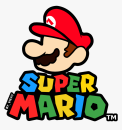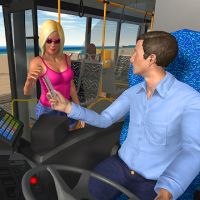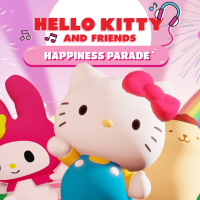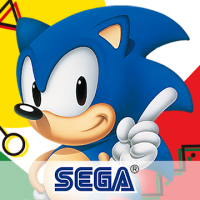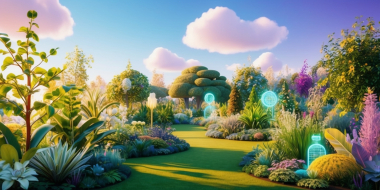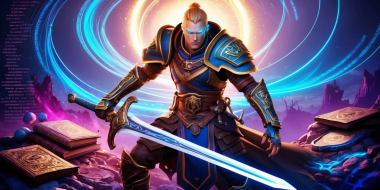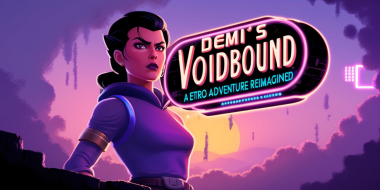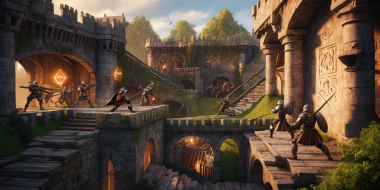Super Mario Bros.™ Wonder
Super Mario games hold a legendary status in the world of video games, carving a significant impact since their inception. Yet, some fans feel the iconic spark of 2D Mario dimmed after the shift to 3D. Following a hiatus since 1995, my belief is that Super Mario Bros. Wonder delightfully revives the charm of the 2D Mario universe.
This enchanting journey embodies the embrace of the distinctive elements that define Mario – first-class platform gaming, innovative level designs coupled with pleasing aesthetics, and an infectious music score. Undoubtedly, Nintendo's New Super Mario Bros series also ticked these boxes with its four installments available on various platforms, garnering impressive sales. Even though these versions offer solid gaming, they somehow lacked the magical connection for many ardent followers like myself.
Today, allow me to dive into Super Mario Wonder, delineating both its unique offerings and diverse attributes compared to its predecessors. The goal is to elucidate why, from my standpoint, this is the finest 2D Mario escapade since Yoshi's Island. It's also fitting to touch upon the game’s technical aspects in keeping with the spirit of Digital Foundry.
As an enthusiast of the platforming genre, I've conquered countless platformers over the years. This journey has led to the accumulation of expectations that define a genuinely outstanding side-scrolling game:
- Core Gameplay Elements – The fluidity of character movements and gratification derived from engaging with the universe.
- Level Layout and Challenges – The structure, scale, and pacing.
- Visual Appeal – A beautiful and smoothly animated gaming world enhances the overall experience.
- Soundtrack – A melody that is authentic and memorable is a must-have for a great platformer.
Using these criteria, let's delve into Super Mario Wonder and examine how it fares against previous titles.
Unpacking Super Mario Wonder's Gameplay
No two Mario games share identical gameplay; my preferred version has always been the concise controls of Super Mario World. The thrill of velocity and precision it offered still holds me captive.
Super Mario Wonder, in my opinion, sits perfectly between the extreme precision of World and the more weighted Super Mario Bros. 3. It gives an agile, responsive experience with a reasonable weight behind Mario's actions, thus magnifying the sense of pace. The ease and joy derived from basic movements are instrumental in a platformer, and Super Mario Wonder nails this.
Innovation is also evident with the introduction of new power-ups, each complementing the tried-and-tested fire flower with their unique abilities. The trailers have introduced us all to the elephant, displaying characteristics akin to Wario, but the bubble cap and drill cap introduce completely new gaming possibilities.
Playing Super Mario Wonder revealed an instantly noticeable difference in response compared to the four New Super Mario Bros versions. Closer scrutiny of this aspect led to surprising findings.
Multiple tests eventually labeled the significant difference maker – momentum. Super Mario Wonder tackles this aspect differently compared to the New Super Mario Bros. games. The increased sense of 'heaviness' in the New series is due to the greater momentum. On the other hand, making quick adaptations and precise moves is more satisfying in Wonder. While this increase in responsiveness is a game-changer, Wonder also wins with its depiction.
The Alluring Visuals of Super Mario Wonder
Super Mario Wonder paints a picture brimming with vibrant colors and unique flair. While we will delve into those shortly, an impressive distinction derives from the animation and keyframes. Traditional sprite-based games necessitate the creation of multiple frames individually to maintain a constant progression in the character's movement, as evident in Super Mario World. The feel of the game hinges on this aspect, but achieving this in 3D is challenging as you move beyond specific frames towards smooth interpolated animation.
In Super Mario Wonder, Nintendo artfully bridges this gap by simulating characters that move as if in 3D, resembling sprites. This is another marvel that Super Mario Wonder achieves, reviving the engaging classic 2D Mario experience for today’s gaming enthusiasts.
Rediscovering the Finesse of Animation and Visual Delights in Super Mario Wonder
When discussing Super Mario Wonder, attention must be drawn to the laborious craftsmanship poured into posing and keyframes. Mario's iconic jumping pose resonates with the nostalgic spirit of classic Mario. Designers have paid a clear tribute to detail, encapsulating sprite-like transitions between Mario's ascending and descending poses while tirelessly maintaining a subtle flow of secondary animations. The preciseness of these poses successfully pays homage to Super Mario World.
A demonstration of this fusion can be observed in Mario's animated run around the world map. For instance, Mario's directions are sharply snapped amongst the eight cardinal and ordinal pivots, as opposed to a smooth swing. This portrays a calculated reiteration of a sprite-based game wherein limited angles are hand-drawn by the artist. This is an area where New Super Mario Bros lacked precision. The detailing in Mario's pose in Wonder is strikingly artistic, while in Mario U, it appears somewhat limp. Thus, the lack of accentuated poses, compounded with the enhanced momentum in the New Super Mario series, underscores why Wonder holds a lighter, agile touch.
Animated Details that Breathe Life into Characters
The meticulous magnification of detail in Wonder isn't confined to Mario. Every character, including the enemies, paints vivid expressions that add depth. As Mario performs an acrobatic run through a stage, he and his foes exhibit eye-tracking, creating a dramatic spectacle of dueling glares. Moreover, characters depict responses to Mario's actions, enhancing the gameplay’s sense of realism and interaction. For example, the terrified look on a Goombrat's face upon seeing his companion squashed by Mario conveys the imminent danger he faces.
Such character reactions inject personality into the gameplay. An excellent inclusion is the talking flowers dispersed across the game, reacting and engaging with Mario. This delightful detail positively impacts the overall gaming experience. Moreover, the backdrop visuals in Super Mario Wonder deserve applause, especially for deviating from stereotypical Mario sequences.
Refreshing Departure that Celebrates Mario's Past
The progression of Mario games since its inception embraced creative risks, progressively integrating newer and abstract shapes and concepts. Super Mario Wonder embarks on similar grounds, acknowledging the game’s past while unveiling a contemporary and refreshing visual style.
With a redesigned color palette and unique geometric patterns, every level is a treat to the eye. Animated particles and effects breathe life into the scenes, while the wide array of colors, from deep purples to burnt oranges and lush greens, is an absolute visual spectacle. This lively transformation also wraps its magic around depth perception, with multi-layered parallax scrolling at different speeds, enhancing the gameplay's 3D illusion.
Every stage in Super Mario Wonder is akin to a meticulously designed work of art, deliberately avoiding the mimicry of visual styles from previous titles, a contrast to the approach taken in the New Super Mario Bros series. Hence, the developers in the Wonder team have beautifully conceptualized a fresh design that continues to echo the authentic spirit of Mario.
Conclusion: The Triumph of Super Mario Wonder
All in all, Super Mario Wonder serves as a brilliant testament to Nintendo's enduring legacy, ingeniously imbibing elements of classic Mario while letting every facet of the game shine with reinvented details. With meticulous attention to animation and keyframes, an expanded color palette, and an immersive world filled with interactive characters, the game feels like a love letter to the timeless nostalgia of Super Mario. What sets Super Mario Wonder supremely apart is its unique way of balancing these nostalgic elements with fresh and modern gaming aesthetics, thus delivering a side-scroll experience that is both timeless and contemporary.
Great
Latest Reviews
-
Simulation
FarmVille: Tropic Escape
![]() The idea of escaping to a tropic island is one I would support any day, mainly because of my crazy everyday schedule. However, since that...
Read full review
The idea of escaping to a tropic island is one I would support any day, mainly because of my crazy everyday schedule. However, since that...
Read full review
-
Simulation
Bus Simulator
![]() A lot of bus simulator games promise to give you the real bus driver experience, but they do not deliver on the promise. Before I...
Read full review
A lot of bus simulator games promise to give you the real bus driver experience, but they do not deliver on the promise. Before I...
Read full review
-
Simulation
Flight Simulator
![]() I've always believed that being a pilot is one of the most awesome professions out there. Sadly, the path to becoming a pilot wasn't one...
Read full review
I've always believed that being a pilot is one of the most awesome professions out there. Sadly, the path to becoming a pilot wasn't one...
Read full review
-
Adventure
Gacha World: Create your own team and conquer evil
Gacha World is an Asian role-playing project with anime graphics, MMO component, battles, raids on bosses and knocking out various valuable items from monsters. The... Read full review
Also recommended
-
Arcade
Minecraft
![]() Minecraft is an open-world sandbox game that allows players to build and destroy any of the blocks in the world. Minecraft is a sandbox indie...
Read full review
Minecraft is an open-world sandbox game that allows players to build and destroy any of the blocks in the world. Minecraft is a sandbox indie...
Read full review
-
Simulation
Episode - Choose Your Story
![]() This drama-filled storytelling game thrills both teenagers and game-maniac adults by allowing them to select the path of the story they want or create their...
Read full review
This drama-filled storytelling game thrills both teenagers and game-maniac adults by allowing them to select the path of the story they want or create their...
Read full review
-
Arcade
Hello Kitty and Friends Happiness Parade
![]() Hello Kitty and Friends Happiness Parade: A Joyful Journey into Sanrio’s Magical World
As an iconic symbol of friendship and cuteness, Hello Kitty has been a...
Read full review
Hello Kitty and Friends Happiness Parade: A Joyful Journey into Sanrio’s Magical World
As an iconic symbol of friendship and cuteness, Hello Kitty has been a...
Read full review
-
Simulation
FarmVille: Tropic Escape
![]() The idea of escaping to a tropic island is one I would support any day, mainly because of my crazy everyday schedule. However, since that...
Read full review
The idea of escaping to a tropic island is one I would support any day, mainly because of my crazy everyday schedule. However, since that...
Read full review
-
Simulation
Flight Simulator
![]() I've always believed that being a pilot is one of the most awesome professions out there. Sadly, the path to becoming a pilot wasn't one...
Read full review
I've always believed that being a pilot is one of the most awesome professions out there. Sadly, the path to becoming a pilot wasn't one...
Read full review
-
Action
Sonic the Hedgehog™ Classic
![]() Sonic the Hedgehog™ Classic is a retro classic side-scrolling platforming adventure game released by Sega in 1991. It was the first title in the popular...
Read full review
Sonic the Hedgehog™ Classic is a retro classic side-scrolling platforming adventure game released by Sega in 1991. It was the first title in the popular...
Read full review
Articles
-
![Digital Gardens: Nurturing Evolution and the Art of Virtual Horticulture]() Digital Gardens: Nurturing Evolution and the Art of Virtual Horticulture
Digital Gardens: Nurturing Evolution and the Art of Virtual Horticulture
-
![Revitalizing a Legend: The Fusion of Tradition and Innovation in Role-Playing Games]() Revitalizing a Legend: The Fusion of Tradition and Innovation in Role-Playing Games
Revitalizing a Legend: The Fusion of Tradition and Innovation in Role-Playing Games
-
![Demi’s Voidbound Quest: A Retro Adventure Reimagined]() Demi’s Voidbound Quest: A Retro Adventure Reimagined
Demi’s Voidbound Quest: A Retro Adventure Reimagined
-
![Shellwood: A Tapestry of Combat, Verticality, and Hidden Mysteries]() Shellwood: A Tapestry of Combat, Verticality, and Hidden Mysteries
Shellwood: A Tapestry of Combat, Verticality, and Hidden Mysteries
-
![Industry Shake-Up: How a One-Year Delay is Redefining Launch Strategies]() Industry Shake-Up: How a One-Year Delay is Redefining Launch Strategies
Industry Shake-Up: How a One-Year Delay is Redefining Launch Strategies
-
![Revolutionizing Roblox: My Hero Academia: Ultimate Unleashes Epic PvP Gameplay]() Revolutionizing Roblox: My Hero Academia: Ultimate Unleashes Epic PvP Gameplay
Revolutionizing Roblox: My Hero Academia: Ultimate Unleashes Epic PvP Gameplay

